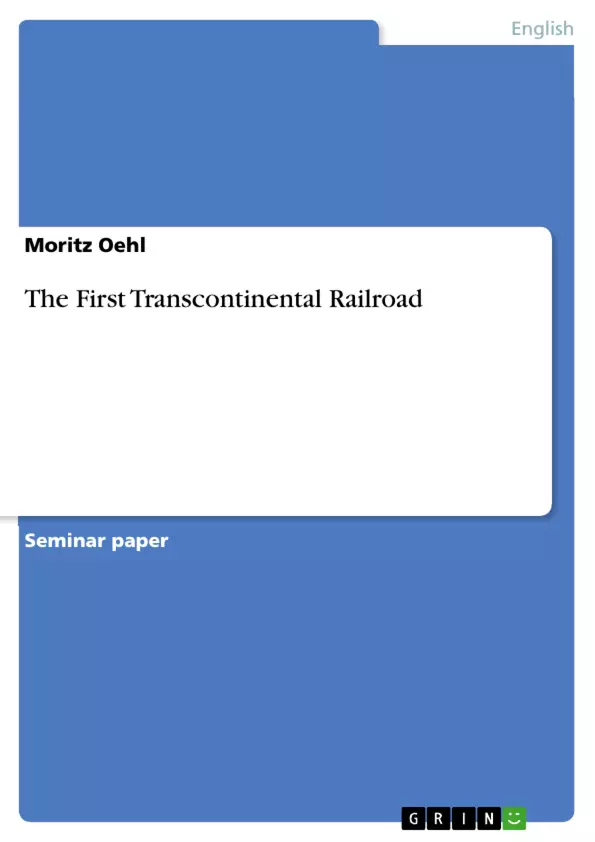1. Introduction
The building of the first Transcontinental Railroad marks one of the highlights in American History. Nearly 20,000 workers, mostly immigrants or Chinese, especially engaged for this job, had build a line stretching from Omaha, Nebraska, to the eastern boundary of California within just six years. This largest project in the history of American transportation cost about $ 50 Mio., a number not reached ever before. Huge discussions preceded the project, even more were held afterwards. This termpaper will deal with the preparations for, the actual work and the consequences of this enormous construction.
[...]
Inhaltsverzeichnis (Table of Contents)
- Introduction
- Still a long way to go...
- The System of Transportation in the US before 1860
- Importance of a Transcontinental Railroad
- The Preparations begin
- Linking the Oceans
- Working Details and Methods
- The Welding of the States
- Consequences of the first Transcontinental Railroad
- Summary
Zielsetzung und Themenschwerpunkte (Objectives and Key Themes)
This term paper investigates the construction of the first Transcontinental Railroad in the United States. It aims to explore the preparations, the actual process of construction, and the consequences of this monumental project.
- The development of transportation systems in the United States prior to 1860.
- The need and rationale for constructing a transcontinental railroad.
- The challenges and methods employed during the construction process.
- The impact of the railroad on the unification and development of the United States.
- The economic and social consequences of the Transcontinental Railroad.
Zusammenfassung der Kapitel (Chapter Summaries)
- Introduction: This chapter sets the stage for the term paper by introducing the significance of the first Transcontinental Railroad as a landmark event in American history. It highlights the scale of the project, the diverse workforce, and the economic implications.
- Still a long way to go...: This chapter explores the state of transportation in the United States prior to 1860. It discusses the limited network of railroads and the reliance on waterways for travel, particularly in the western territories. It then introduces the growing need for a transcontinental railway, citing Asa Witney's advocacy for a connection to Oregon. The chapter concludes by explaining how the discovery of gold in California shifted public opinion, making a railway to San Francisco the preferred western terminus.
- Linking the Oceans: This chapter delves into the details of the Transcontinental Railroad's construction. It covers the organizational structure, the challenges faced by the construction crews, and the social and political implications of the project. The chapter highlights the role of the Union Pacific and Central Pacific companies and discusses the importance of the railroad in uniting the eastern and western states.
Schlüsselwörter (Keywords)
The key terms and concepts central to this study include the Transcontinental Railroad, American history, transportation systems, economic development, westward expansion, and the impact of infrastructure on national unity and social change. This analysis explores the historical context, the challenges faced by the construction process, and the long-term consequences of this transformative project.
- Quote paper
- Moritz Oehl (Author), 2001, The First Transcontinental Railroad, Munich, GRIN Verlag, https://www.hausarbeiten.de/document/797


